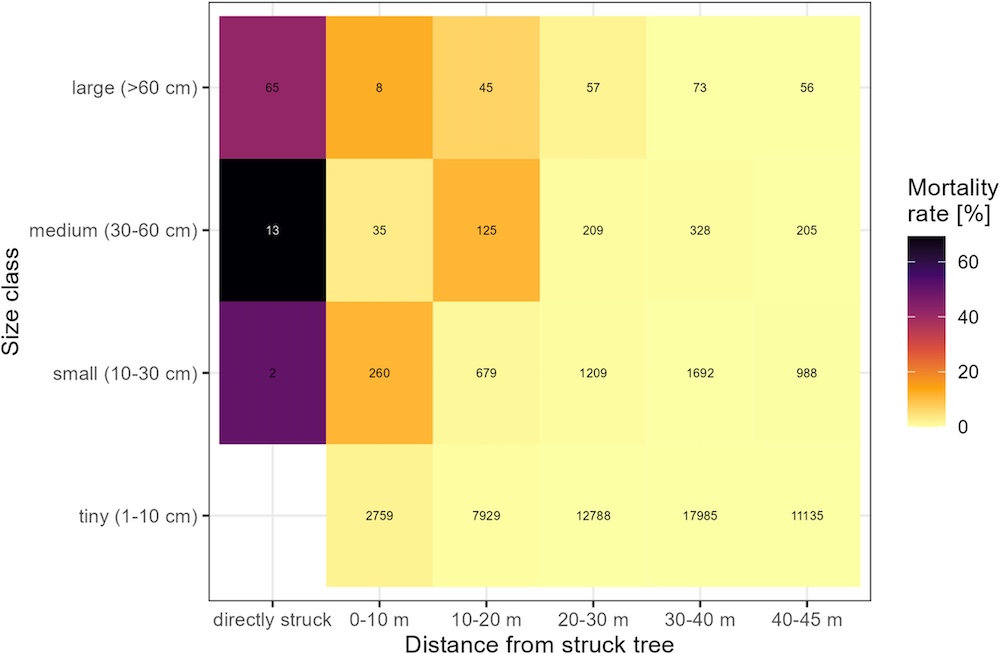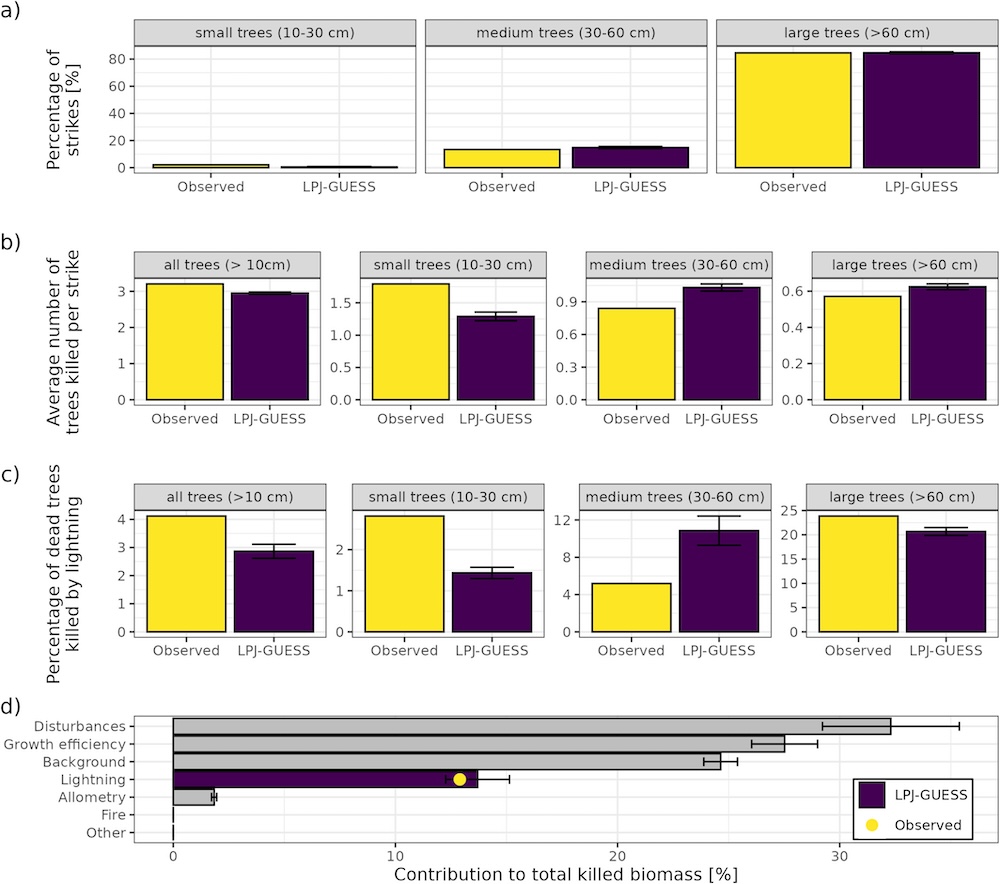A first-of-its-kind study estimates that lightning strikes kill 320 million trees every year.
For perspective, these dead trees account for up to 2.9 percent of annual loss in plant biomass and emit up to 1.09 billion tons of carbon dioxide.
Even more striking (pun unintended), the study includes only tree deaths caused directly by lightning. It does not include tree deaths caused indirectly by lightning-induced wildfires. Altogether, these findings can improve statistical models that help researchers study forest structure and carbon storage on a worldwide scale.
Researchers from the Technical University of Munich (TUM) ascertained these figures using novel mathematical models, which offer an unprecedented overview of how lightning-induced tree mortality impacts the global ecosystem.
Related: Trees Have a Surprising Response to Wildfire Smoke, Scientists Find
Classifying tree mortality was no easy task. Dead trees often lack clear visual signs of their cause of death, while others may be too decomposed for meaningful forest forensics.
Some tree deaths occur slowly, and most surveys are limited to infrequent observations of isolated deaths after the event has occurred. Some areas, like temperate and boreal forests, are not as well-studied as those in the tropics.
So the researchers combined multiple methods to make their global estimate, including using results from another team's camera-based lightning detection system in an old-growth tropical forest in Panama's Barro Colorado Island (BCI). These camera observations were followed up with drone and ground surveys to confirm lightning-struck trees.
This BCI data revealed that lightning is highly contagious. A lightning strike can cause a 'flashover' as electricity crosses the air gap between the crowns of neighboring trees, reaching as far away as 45 meters (almost 150 feet) from the initially struck tree. As a result, each lightning strike killed 3.5 trees on average.
Testing their model against the real data, they found their model adequately simulated the trees killed by lightning strike.

The researchers then applied the validated model to other temperate and tropical forests around the world. To pad out the global averages, the researchers also incorporated two hefty datasets of lightning frequency and density, one from a spaceborne optical network and the second from ground-based observations.

According to the simulations, "286–328 million lightning strikes hit the Earth's surface each year," with the majority occurring over ice-free land areas, particularly in the tropics. This resulted in the annual death of 301-340 million trees over the 2004-2023 period, including 24-36 million large trees (over 60 centimeters in diameter).
For comparison, natural causes kill around 50 billion trees annually, occasionally creating 'farting' ghost forests. So while lightning is only responsible for 0.69 percent tree deaths overall, it is responsible for up to 6.3 percent of large-tree deaths.

Additionally, these numbers appear to be rising.
"Currently, lightning-induced tree mortality is highest in tropical regions," says Andreas Krause, a computer scientist at TUM's Land Surface-Atmosphere Interactions lab and the study's lead author.
"However, models suggest that lightning frequency will increase primarily in middle-and-high-latitude regions, meaning that lightning mortality could also become more relevant in temperate and boreal forests."
The impact may be significant; a separate study predicts a 9-18 percent uptick in large-tree deaths for a 25-50 percent increase in lightning frequency.
Most importantly, the study provides evidence that lightning-induced tree deaths are underestimated – if estimated at all. The researchers note that tree mortality is a neglected aspect in the dynamic models that scientists use to study how forests respond to environmental shifts, and should be included in future carbon calculations.
This research is published in the journal Global Change Biology.
